
All Solutions
Page 343: Check Your Understanding
period: $dfrac{2pi}{|k|}=dfrac{2pi}{|4|}=dfrac{pi}{2}$
amplitude: $|a|=|0.5|=0.5$
horizontal translation: $d=0$
equation of the axis: $y=0$
#### (b)
period: $dfrac{2pi}{|k|}=dfrac{2pi}{|1|}=2pi$
amplitude: $|a|=|1|=1$
horizontal tanslation: $d=dfrac{pi}{4}$
equation of the axis: $y=3$
period: $dfrac{2pi}{|k|}=dfrac{2pi}{3}$
amplitude: $|a|=|2|=2$
horizontal translation: $d=0$
equation of the axis: $y=-1$
#### (d)
period: $dfrac{2pi}{|k|}=dfrac{2pi}{|-2|}=pi$
amplitude: $|a|=|5|=5$
horizontal translation: $d=dfrac{pi}{6}$
equation of the axis: $y=-2$
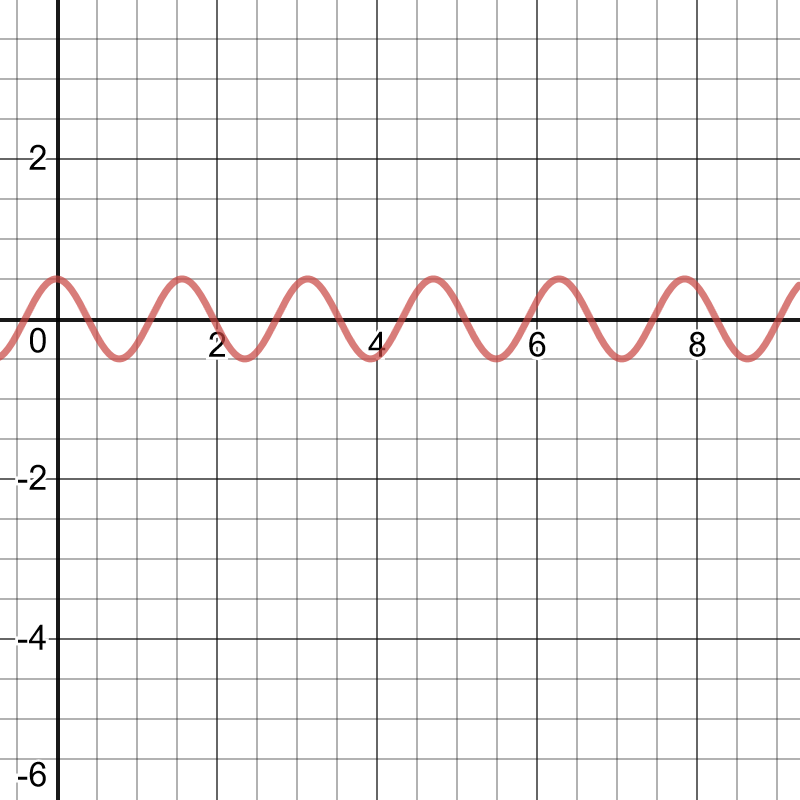
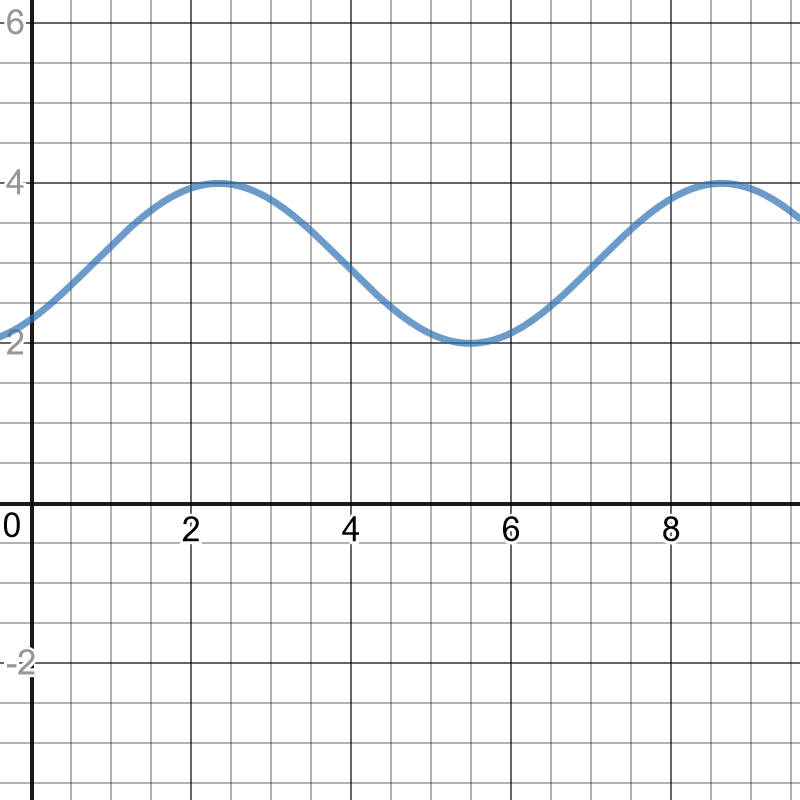
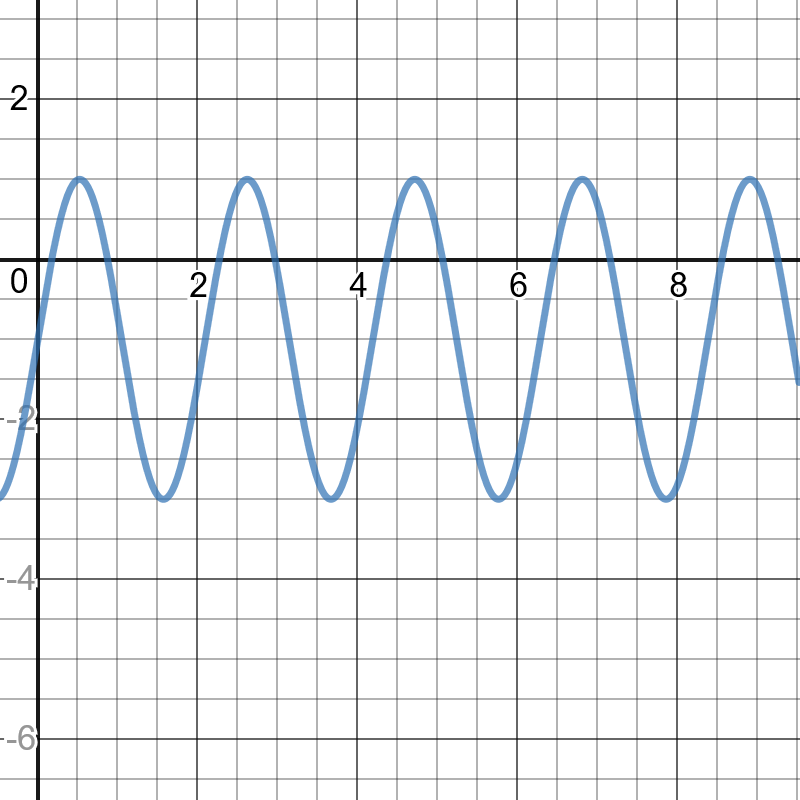
Only the last one is cut off.
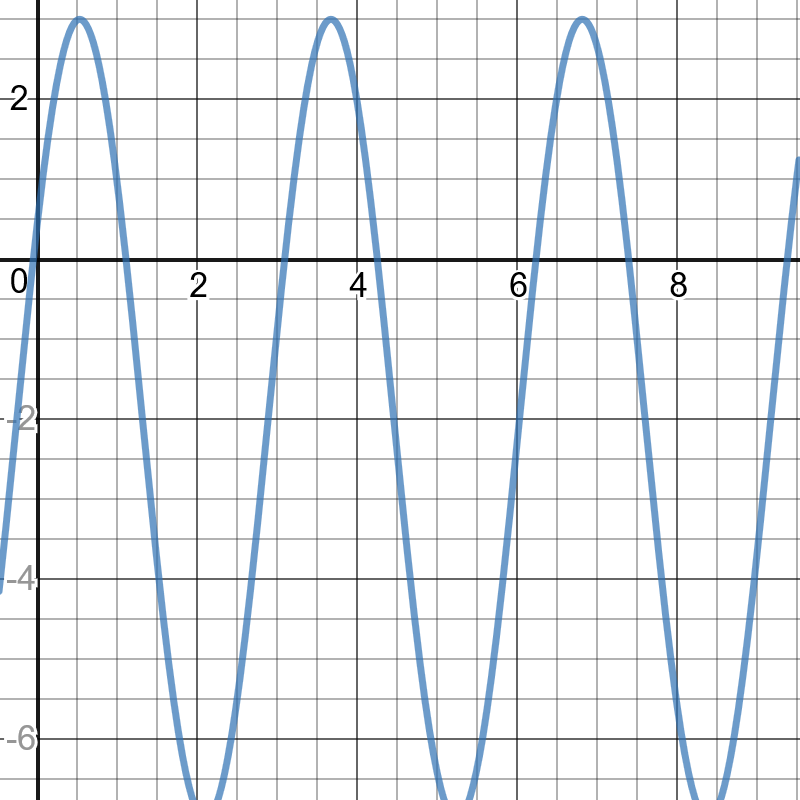
period: $dfrac{2pi}{|k|}=dfrac{2pi}{|4|}=dfrac{pi}{2}$
amplitude: $|a|=|-2|=2$
horizontal translation: $d=-dfrac{pi}{4}$ units to the left equation of the axis: $y=4$
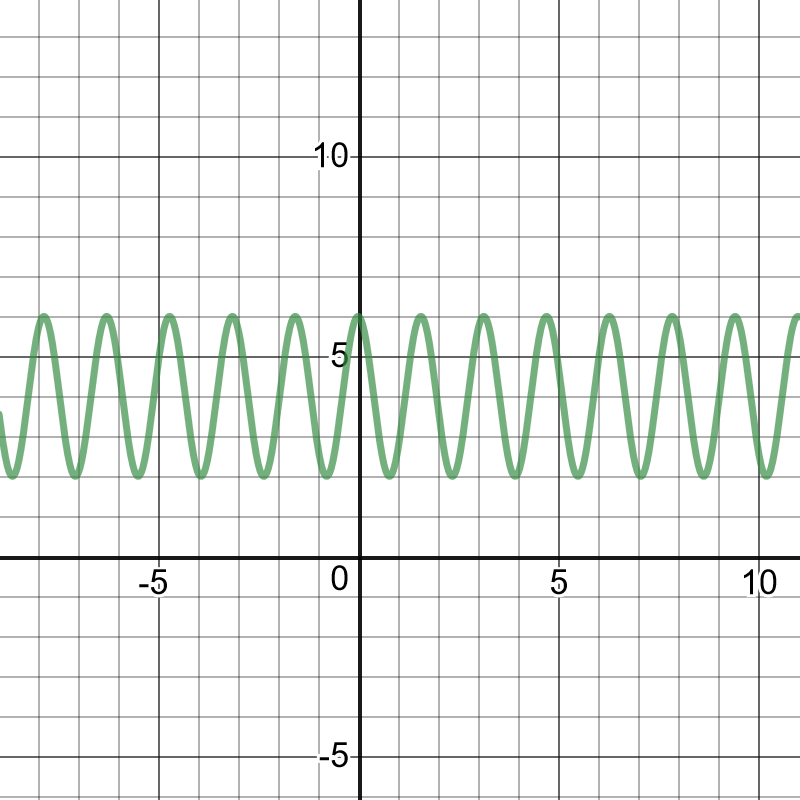
#### (a)
$a=25$
period: $dfrac{2pi}{|k|}=pi$
$k=2$
$f(x)=25 sin (2x)-4$
#### (b)
$a=dfrac{2}{5}$
period: $dfrac{2pi}{|k|}=10$
$k=dfrac{pi}{5}$
$f(x)=dfrac{2}{5}sinleft(dfrac{pi}{5}x right)+dfrac{1}{15}$
$$
a=80
$$
period: $dfrac{2pi}{|k|}=6pi$
$k=dfrac{1}{3}$
$f(x)=80 sinleft(dfrac{1}{3}x right)-dfrac{9}{10}$
#### (d)
$a=11$
period: $dfrac{2pi}{|k|}=dfrac{1}{2}$
$k=4pi$
$f(x)=11sin(4pi x)$
period$=2pi$, amplitude$=18$, equation of the axis is $y=0$; $y=18sin x$
#### (b)
period$=4pi$, amplitude$=6$, equation of the axis is $y=-2$; $y=-6sin(0.5x)-2$
#### (c)
period$=6pi$, amplitude$2.5$, equation of the axis is $y=6.5$;
$y=-2.5cosleft(dfrac{1}{3}x right)+6.5$
#### (d)
period$=4pi$, amplitude$=2$, equation of the axis is $y=-1$;
$y=-2cosleft(dfrac{1}{2}x right)-1$
$textbf{Vertical stretch}$ by a factor of $4$, $textbf{vertical translation}$ $3$ units up.
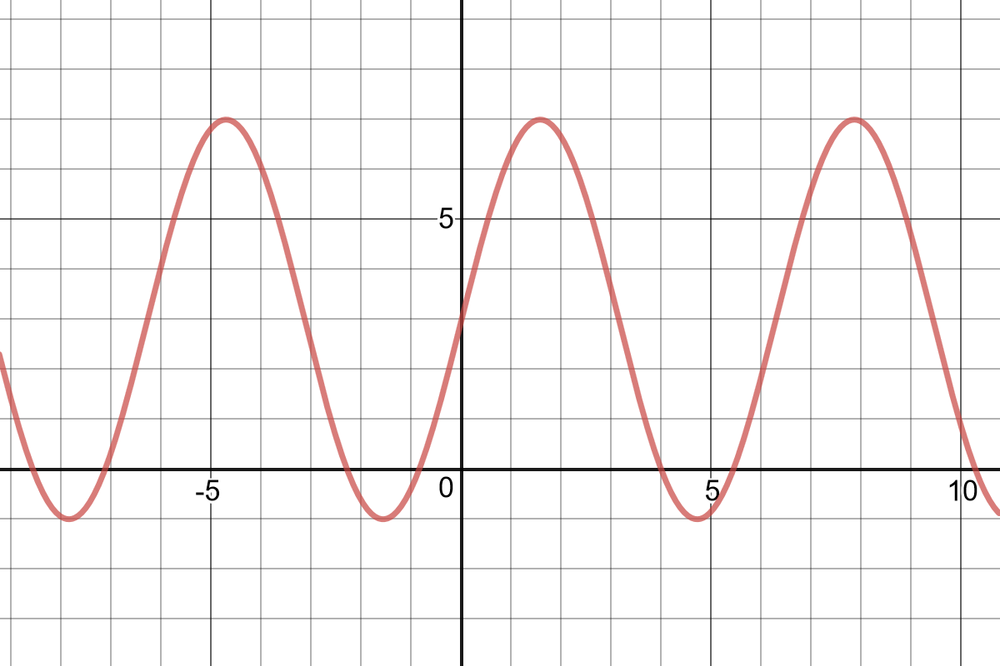
$textbf{Reflection}$ in the $x$-axis, $textbf{horizontal stretch}$ by a factor of $4$.
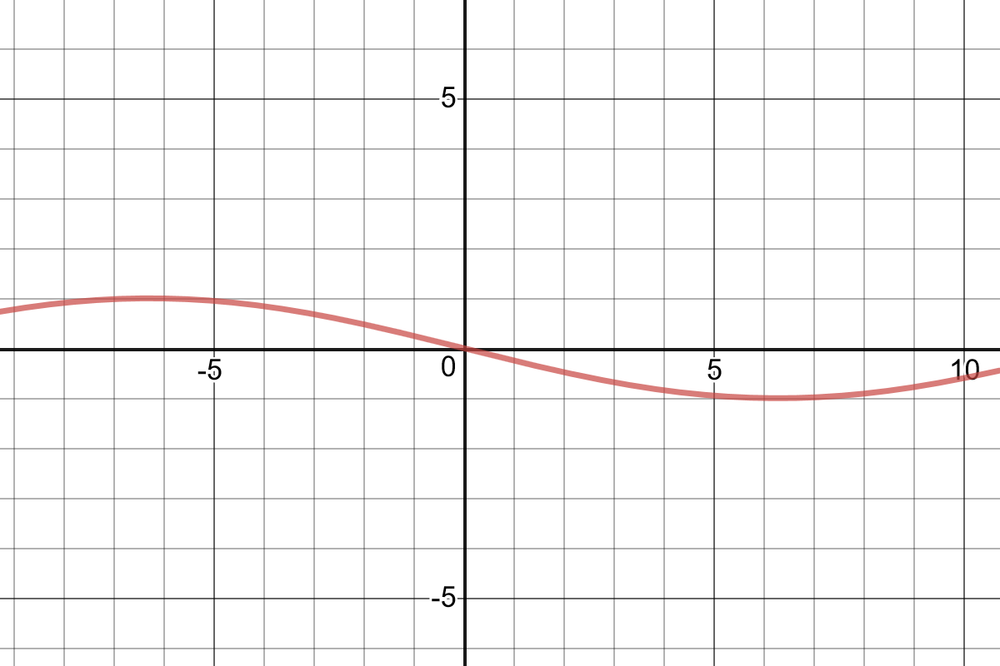
$textbf{Horizontal translation}$ $pi$ to the right, $textbf{vertical translation}$ $1$ unit down.
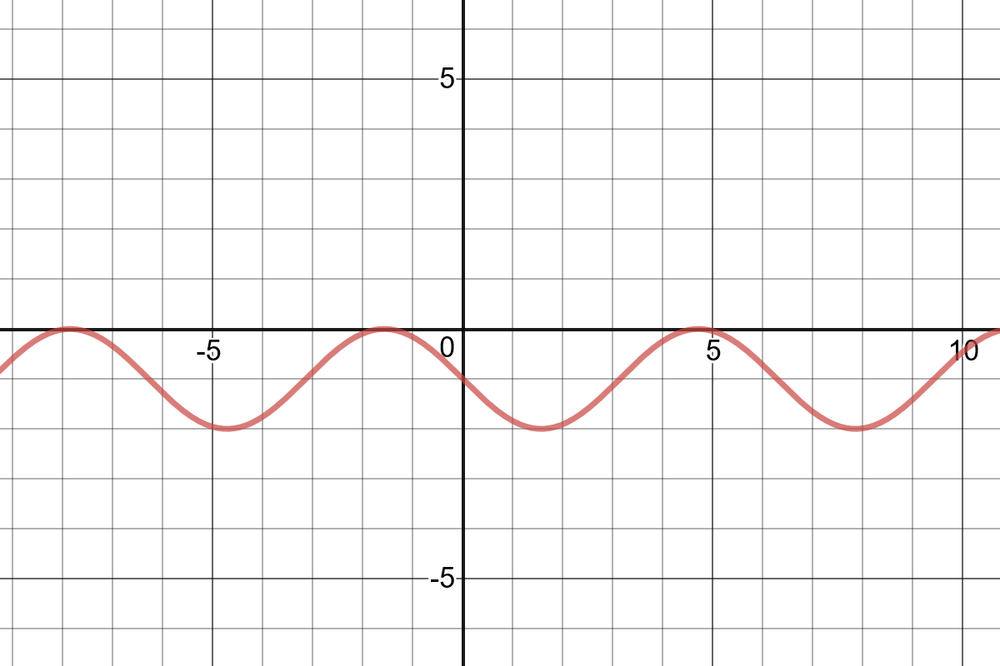
$textbf{Horizontal compression}$ by a factor of $dfrac{1}{4}$, $textbf{horizontal translation}$ $dfrac{pi}{6}$ to the left.
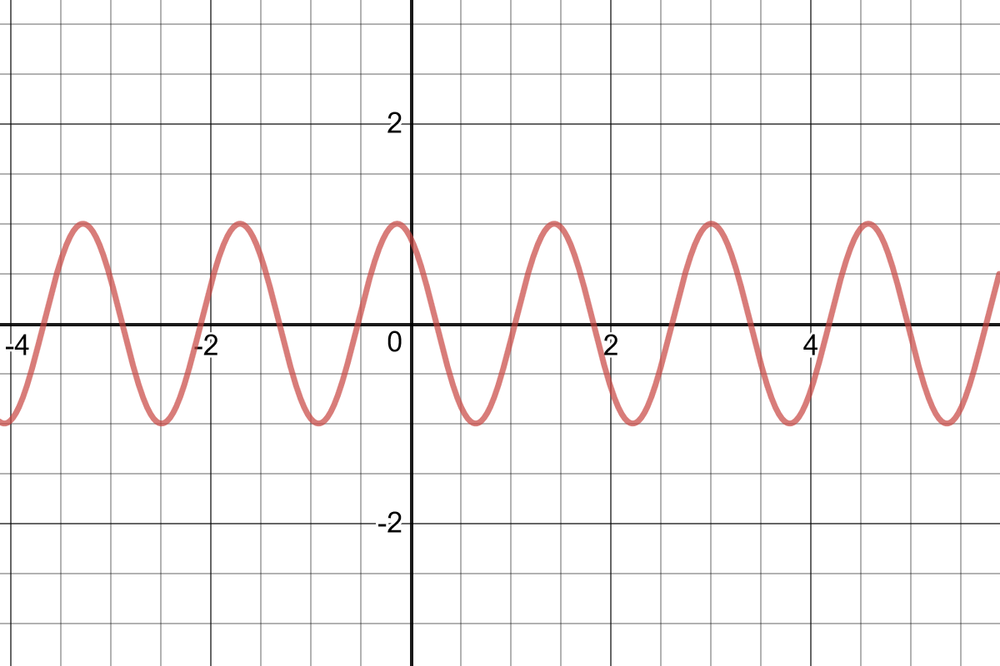
f(x)=dfrac{1}{2}cos x+3
$$
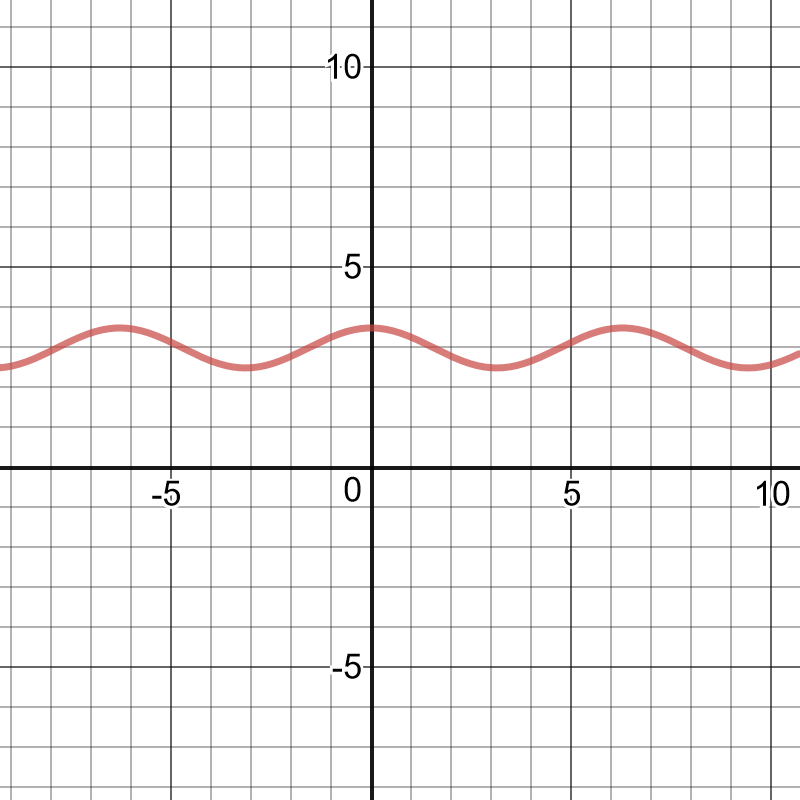
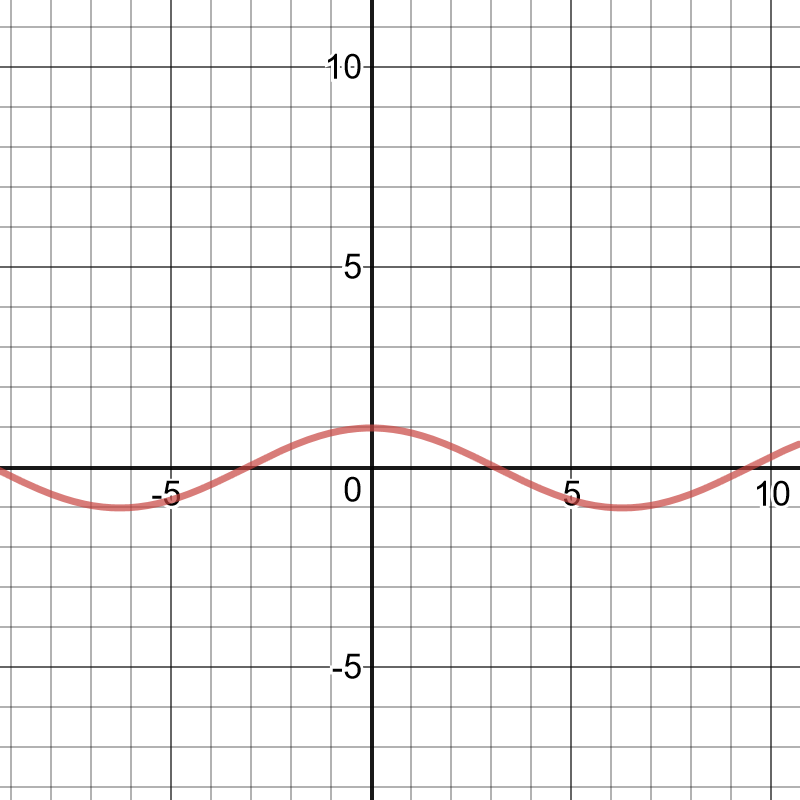
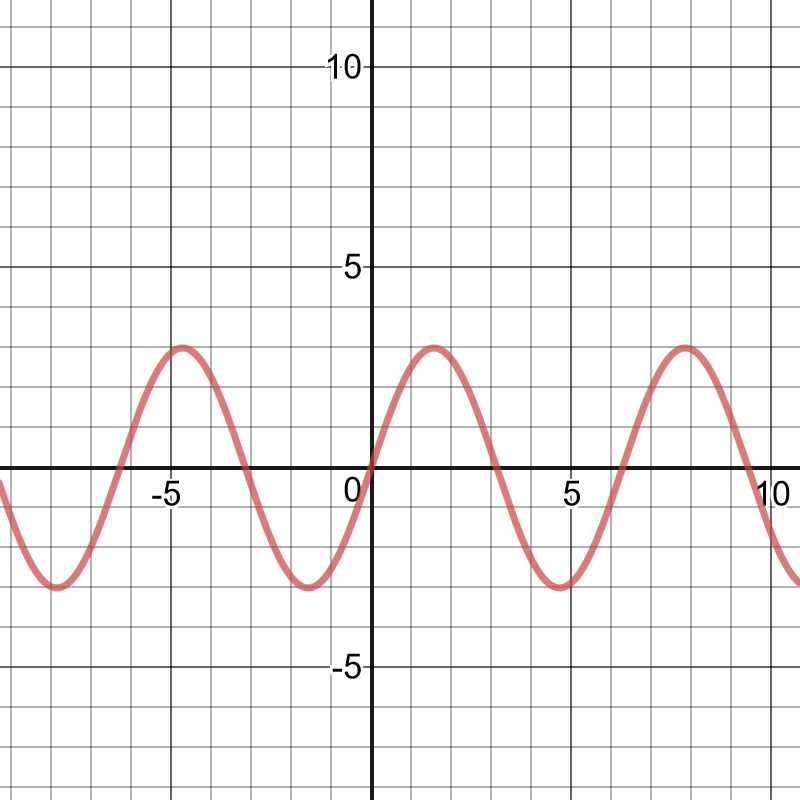
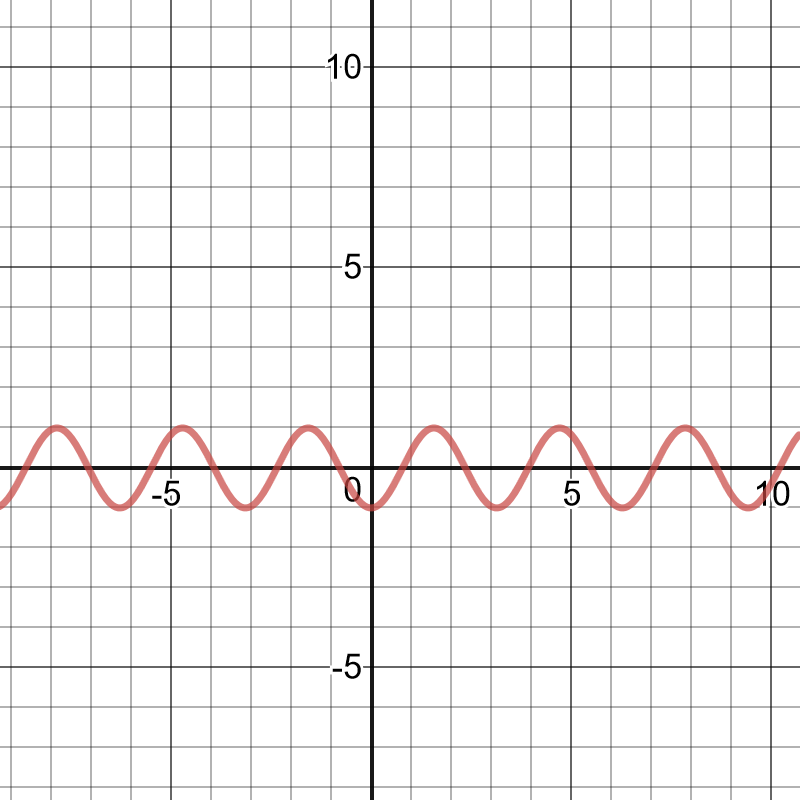
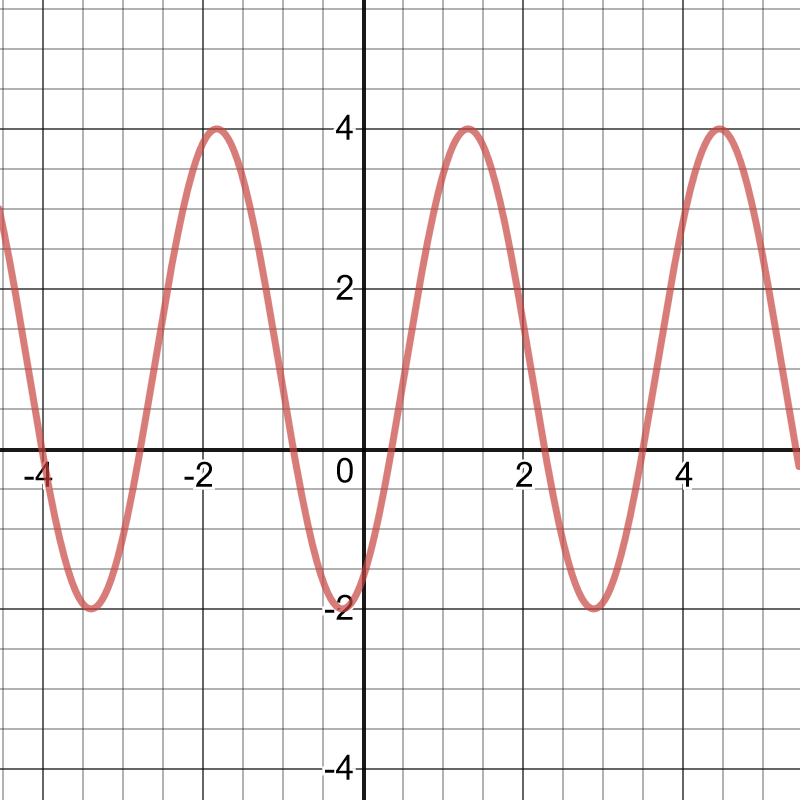
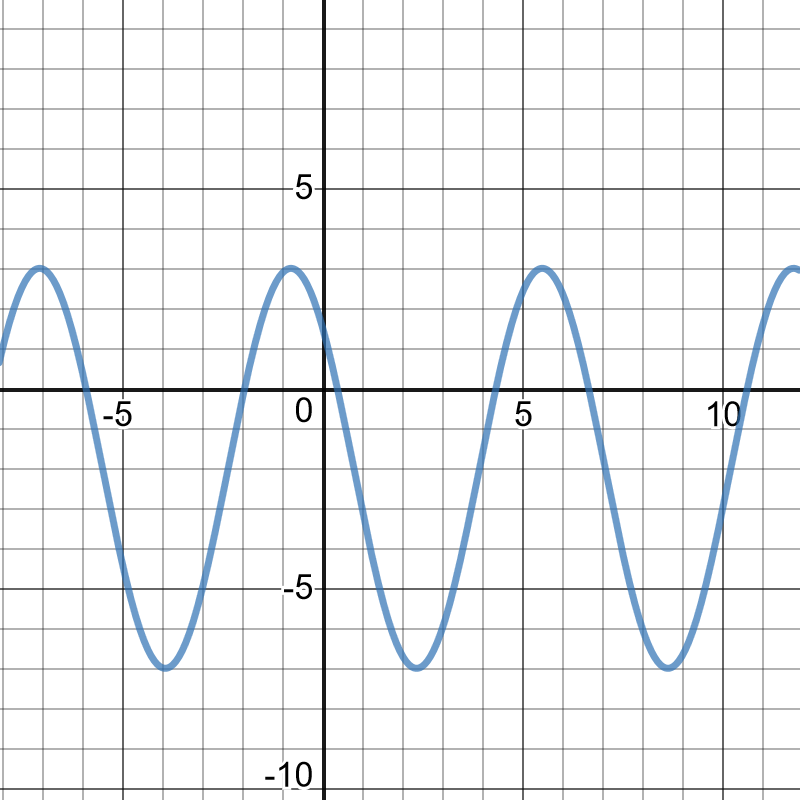
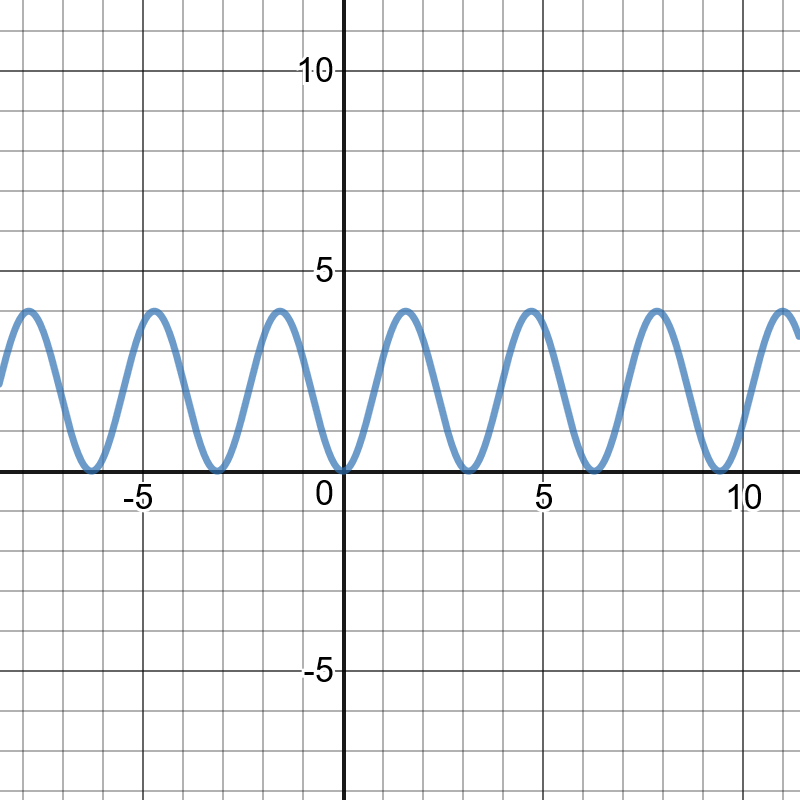
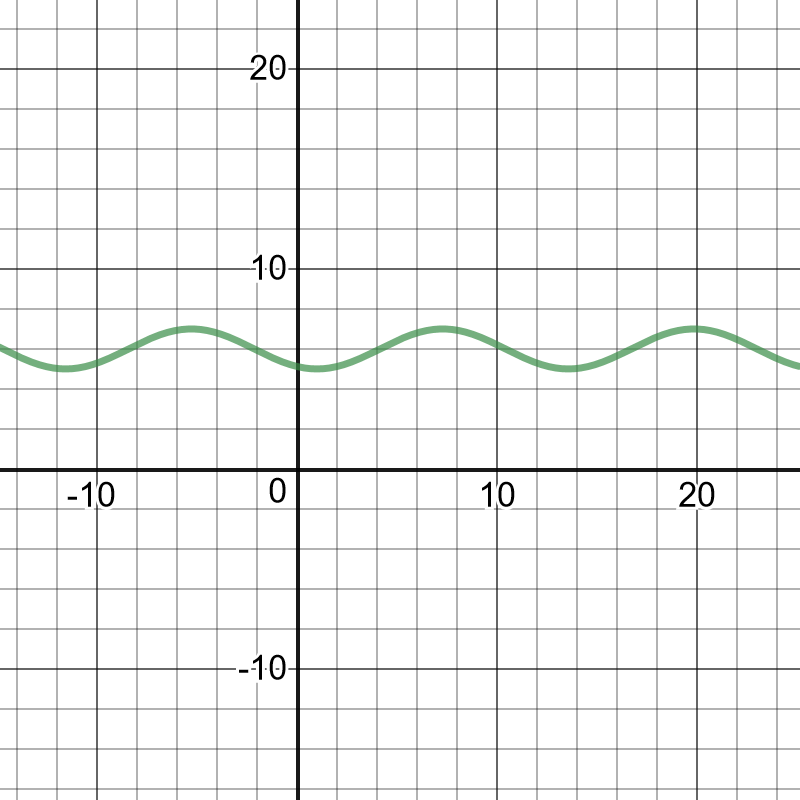
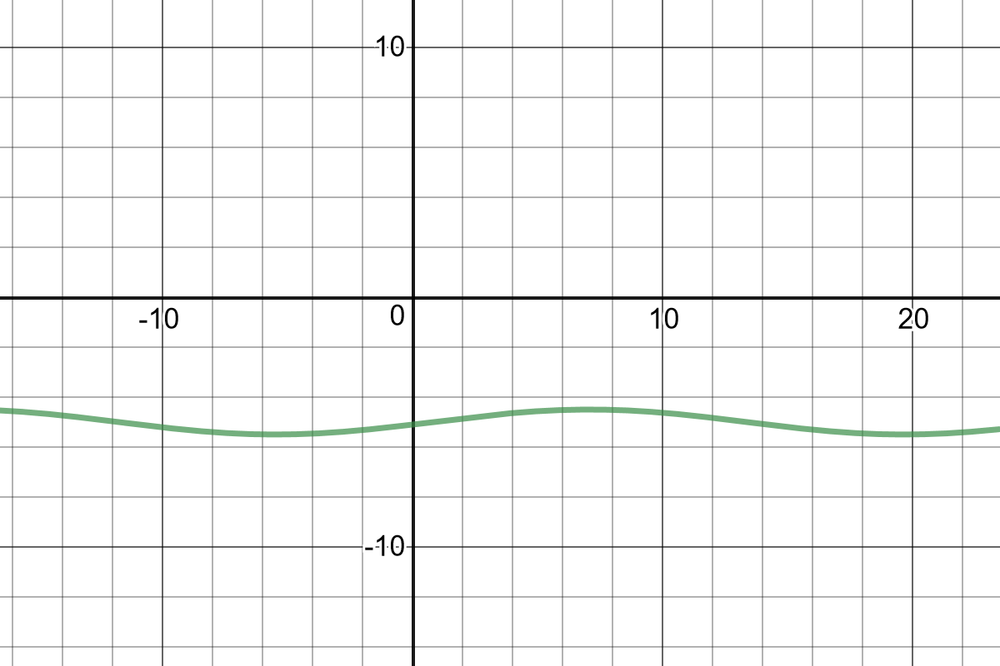
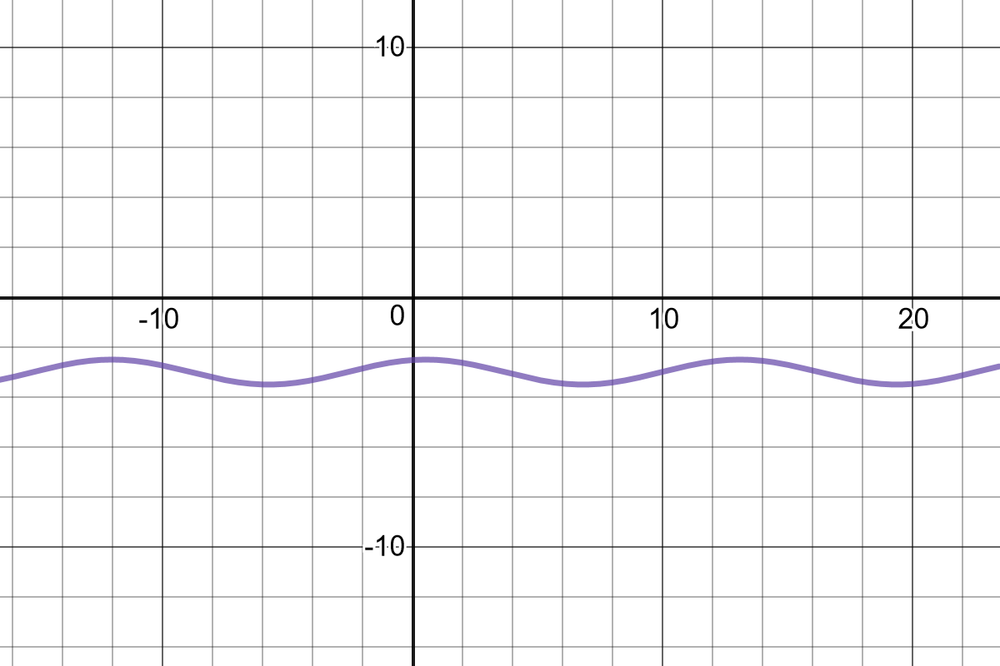
period:$dfrac{2pi}{|k|}=dfrac{5pi}{3}$
$k=dfrac{6}{5}$
The period of the function is $dfrac{6}{5}$.
This represents the time between one beat of a person’s heart and the next beat.
#### (b)
$P(60)=-20cosleft(dfrac{5pi}{3}(60) right)+100=80$
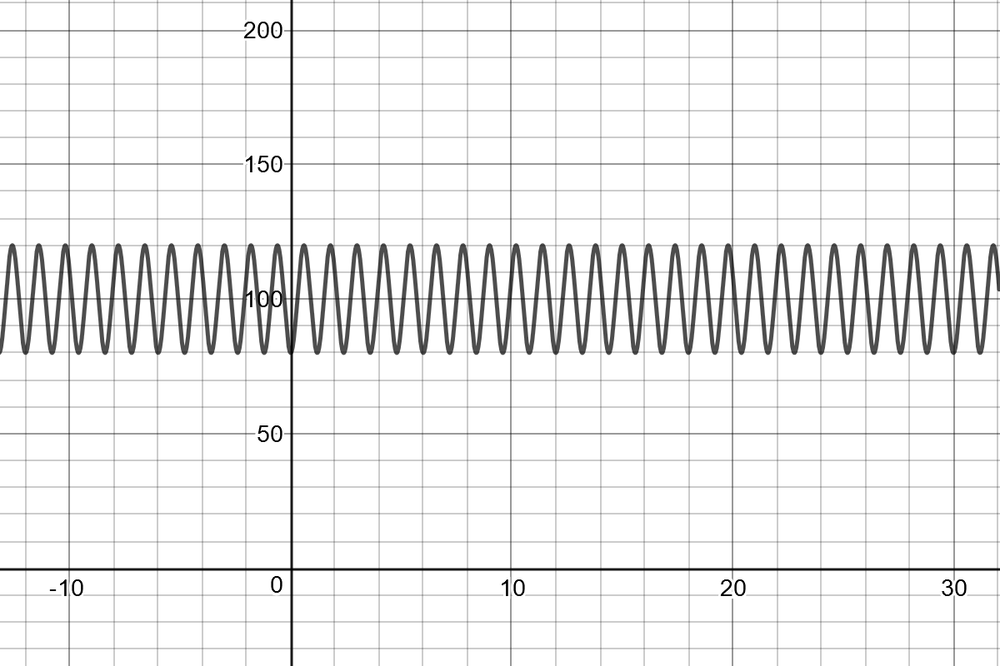
The range for the function is between $80$ and $120$. The range means the lowest blood pressure is $80$ and the highest blood pressure is $120$.
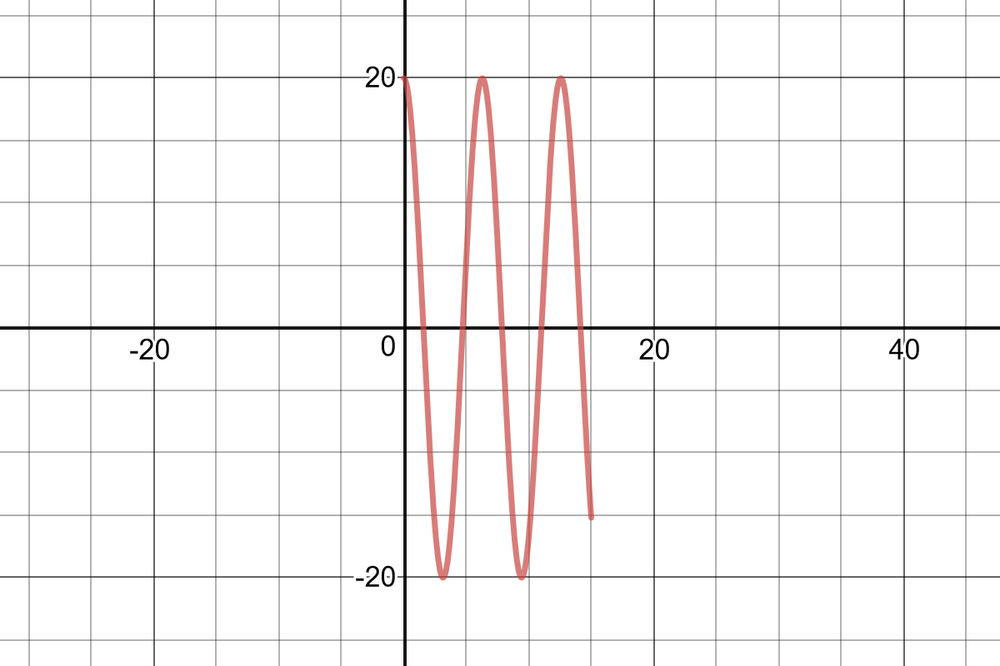
There is $textbf{a vertical stretch}$ by a factor of $20$. The period is $0.8$ s.
$dfrac{2pi}{k}=0.8$
$k=dfrac{5pi}{2}$
There is $textbf{a horizontal compression}$ by a factor of $dfrac{1}{|k|}=dfrac{2}{5pi}$.
There is $textbf{a horizontal translation}$ $0.2$ to the left.
#### (c)
$$
y=20sin(dfrac{5pi}{2}(x+0.2))
$$
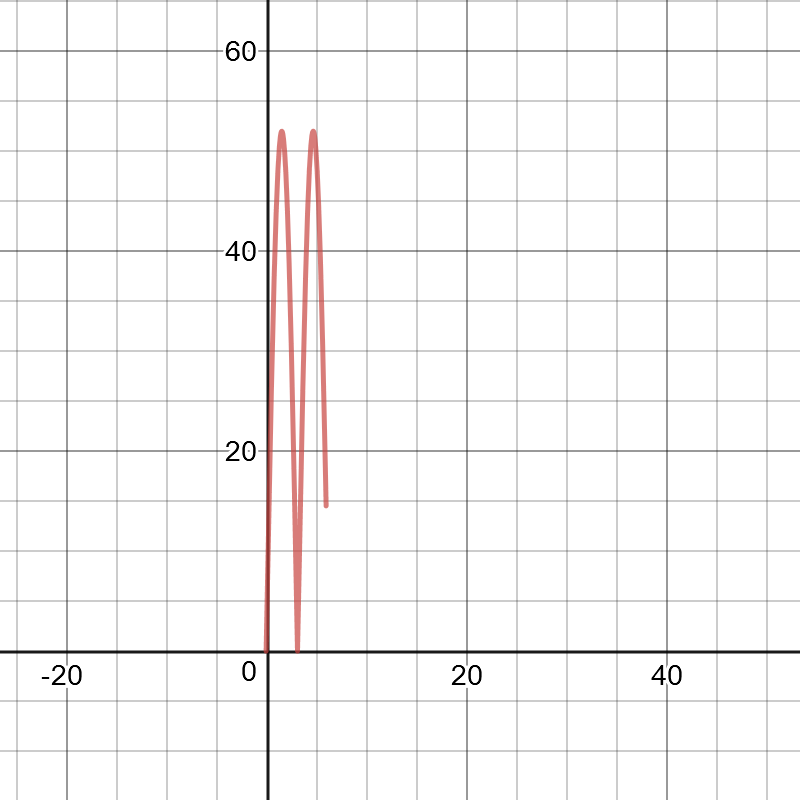
$textbf{Vertical stretch}$ by a factor of $25$, $textbf{reflection}$ in the $x$-axis, $textbf{vertical translation}$ $27$ units up, $textbf{the period}$ is $3$ s.
$dfrac{2pi}{k}=3$
$k=dfrac{2pi}{3}$
$textbf{horizontal compression}$ by a factor of $dfrac{1}{|k|}=dfrac{3}{2pi}$.
#### (c)
$y=-25cos(dfrac{2pi}{3}x)+27$
Since the maximum is $4$ units above $y=9$, the minimum would be at $y=5$.If the period of the function is $2pi$, then the minimum would be at $dfrac{pi}{13}+pi$ of $dfrac{14pi}{13}$.
This isa cosine function with amplitude$=1$.
period$=dfrac{2pi}{0.5}=4pi$
$y=cos(4pi x)$
#### (b)
This issine function with a reflection in the $x$-axis and an amplitude$=2$.
period$=dfrac{2pi}{8}=dfrac{pi}{4}$
$$
y=-2sinleft( dfrac{pi}{4}xright)
$$
#### (c)
The $y$-axis is $y=-1$ and the amplitude is $4$.The function is shifted horizontally to the right by $10$.
period$=dfrac{2pi}{40}=dfrac{pi}{20}$
$y=4 sinleft(dfrac{pi}{20}(x-10) right)-1$
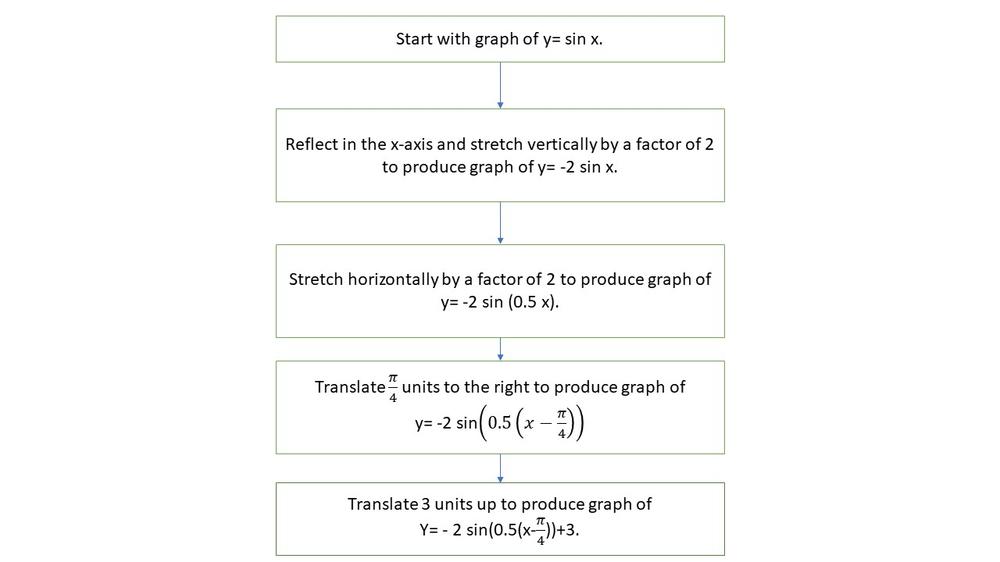
The car starts at the closest distance to the pole which is $100$ m.
#### (b)
The centre of the track is $400$ m from the pole because it is half the distance betwen the closest and furthest point.
#### (c)
The radius is $400-100=300$ m.
#### (d)
The period of the function is $80$ s.This is how long it takes to complete one lap.
#### (e)
$dfrac{2pi(300)}{80}m/s=23.56194$ m/s

